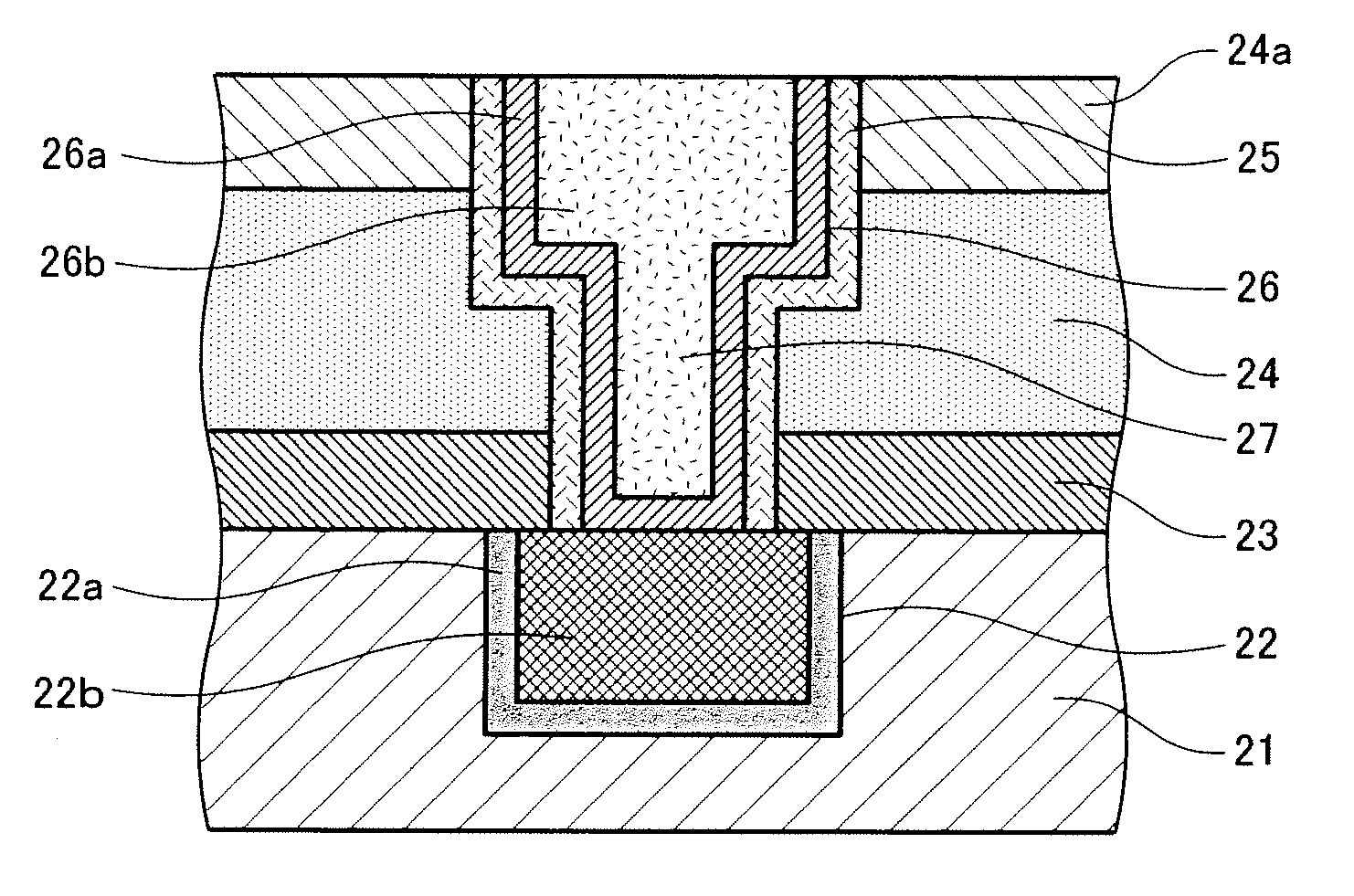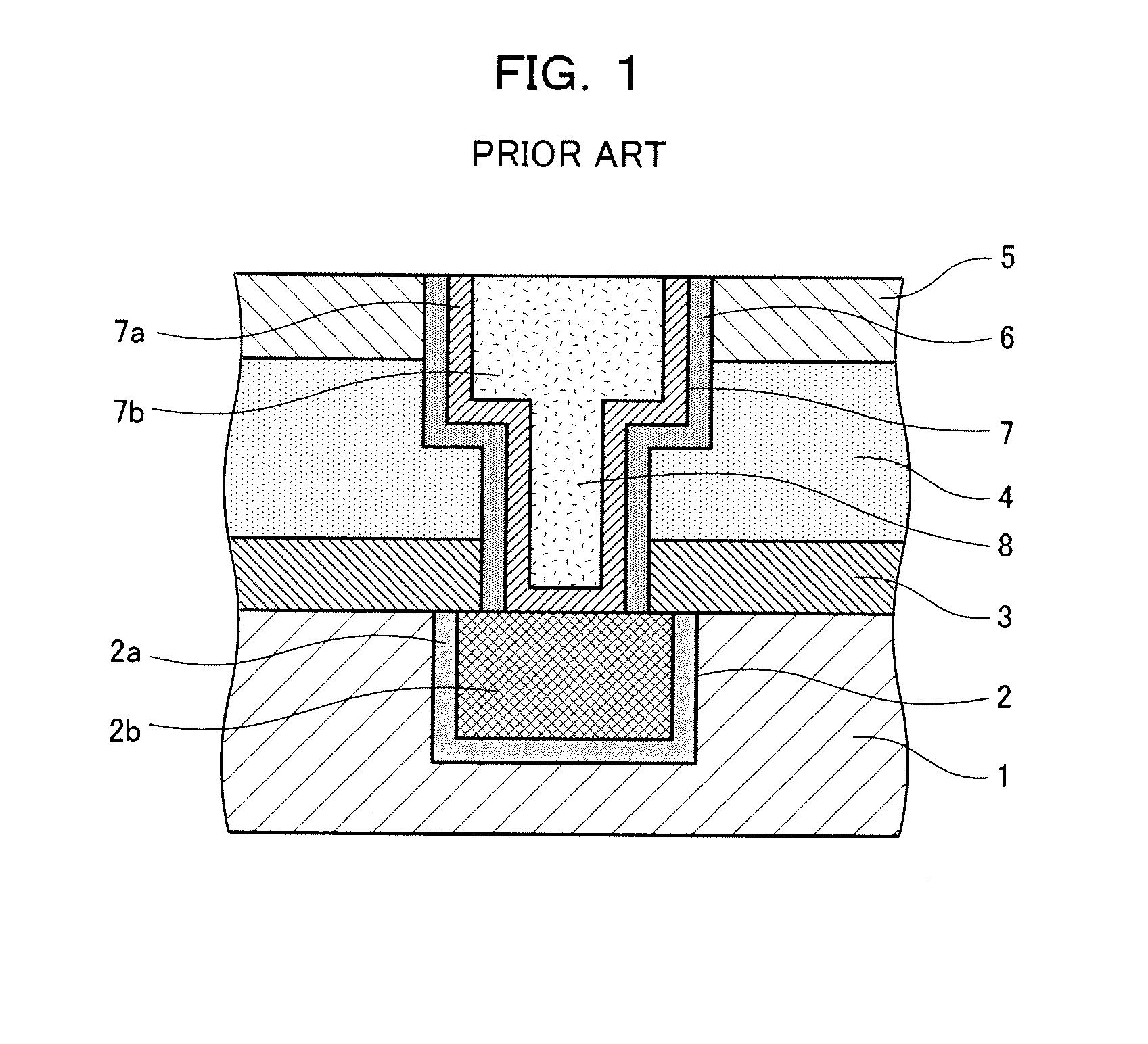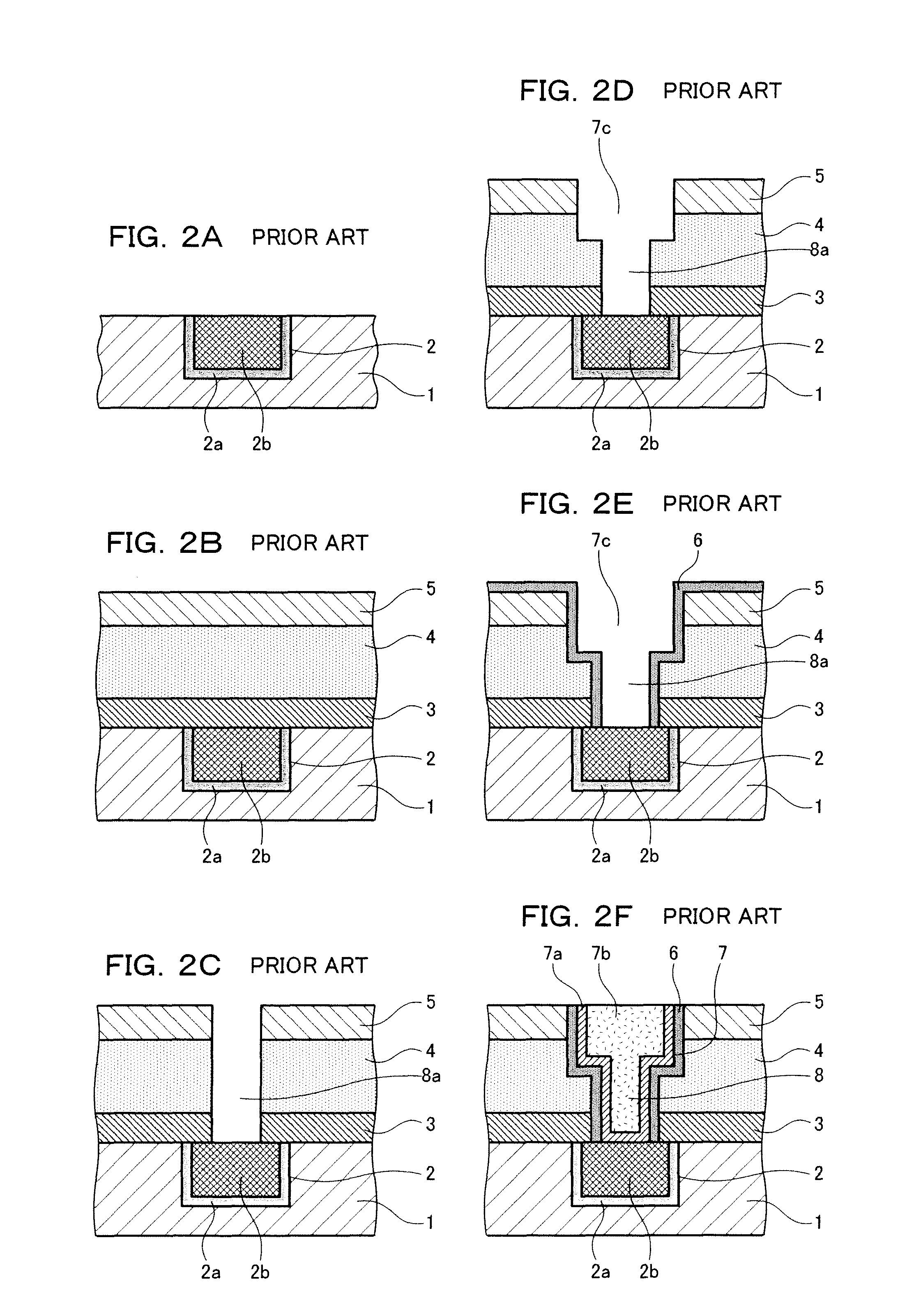Semiconductor device and method of manufacturing the same
a semiconductor and semiconductor technology, applied in semiconductor devices, semiconductor/solid-state device details, electrical apparatus, etc., can solve the problems of reducing the parasitic capacitance of the inter-wiring, increasing the density of the wiring pattern, and increasing the parasitic capacitance generated between wires, so as to reduce the total interlayer insulation film, reduce the signal delay on the wiring, and improve the signal delay characteristics of the wiring
- Summary
- Abstract
- Description
- Claims
- Application Information
AI Technical Summary
Benefits of technology
Problems solved by technology
Method used
Image
Examples
Embodiment Construction
[0059]Hereinafter, a semiconductor device and a method of manufacturing the same representing an embodiment of the present invention will be specifically described with reference to the drawings.
[0060]Further, materials and numeric values used in the present invention are preferable examples but are not restrictive. The materials and numeric values can be appropriately changed without departing from the scope of the invention.
[0061]FIG. 3 shows a cross-sectional structure of a wiring portion of a semiconductor device according to the present embodiment. As shown in FIG. 3, a first metallic wire 22 is formed on a first insulation film 21 composed of silicon dioxide (SiO2) and formed on top of a substrate (not shown) composed of Si by a barrier metal film 22a composed of tantalum nitride (TaN) and a conductive film 22b composed of copper (Cu). A second insulation film 23 composed of silicon carbide (SiC) and which functions as an anti-metallic diffusion film is formed on top of the fi...
PUM
 Login to View More
Login to View More Abstract
Description
Claims
Application Information
 Login to View More
Login to View More - R&D
- Intellectual Property
- Life Sciences
- Materials
- Tech Scout
- Unparalleled Data Quality
- Higher Quality Content
- 60% Fewer Hallucinations
Browse by: Latest US Patents, China's latest patents, Technical Efficacy Thesaurus, Application Domain, Technology Topic, Popular Technical Reports.
© 2025 PatSnap. All rights reserved.Legal|Privacy policy|Modern Slavery Act Transparency Statement|Sitemap|About US| Contact US: help@patsnap.com



